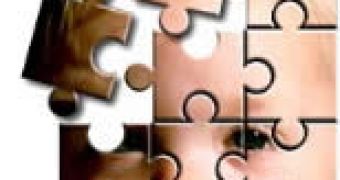Previous studies on autism seemed to indicate that autism is caused by a problem in a certain brain area - the mirror neuron system. This idea had been supported by MRI studies on the brain activity of autistics compared to the brain activity of normal people, while they were looking at various faces. However, a new similar brain imaging study shows that in fact autism may be caused by poor interconnectivity between brain areas - in the new study, the participants haven't looked just at human faces, but also at houses.
Autism is a neurodevelopmental disorder that manifests itself in abnormal social interaction, communication ability, patterns of interests, and patterns of behavior. In general, people with autism suffer from a failure to develop normal speech, an absence of normal facial expression and body language, a lack of eye contact, a tendency to spend time alone, a lack of imaginative play, repetitive behavior and obsession with particular objects or routines. All autistics suffer from an impaired ability to communicate and relate to others, but some of them are able to socially interact to a greater degree than their peers.
Researchers from the University College in London compared brain scans of 16 people with autism spectrum disorders, or ASD, and above-average IQs, with those of 16 volunteers unaffected by ASD.
The two groups were shown four images on a screen - two of houses and two of faces. They were then asked to concentrate on either the faces or houses and decide if they were identical.
While in case of normal individuals, paying attention to pictures of faces caused a significant increase in brain activity, for ASD people it made little impact on the brain, explaining their lack of interest in faces. On the other hand, both groups had the same reaction to houses.
Dr Geoff Bird, at the UCL Institute of Cognitive Neuroscience, the one who led the research, explained: "The standard view of social problems in ASD is that there is a problem in the part of the brain that processes faces. Our research suggests that this is not the real problem - it seems to be that paying attention to faces doesn't lead to the normal increase in brain activity. This is because the face-processing areas of the brain are not well connected to those parts of the brain that control attention - such as the frontal and parietal regions. We all know that it is harder to pick a face out of a busy crowd, for instance, but when we do find the right face and pay attention to it, we are easily able to tune-out all the other distractions and focus on that one face. It seems that, for people with ASD, paying attention to a face is much harder to do and doesn't have the same effect."
In other words, the reason why the previous studies showed little activity in the neuron mirror system isn't because there is necessarily a problem with this brain area, but because it is short-circuited in a certain sense - it isn't properly connected with the rest of the brain.
These poor links also explain why people with autism have difficulties in relating to others, as the weak links mean they benefit less from social situations, and also explain why autistics are good at paying attention to details, but have difficulty integrating information from a range of sources.
Update: Autism: Communication Breakdown Between Brain Areas (2)

 14 DAY TRIAL //
14 DAY TRIAL //